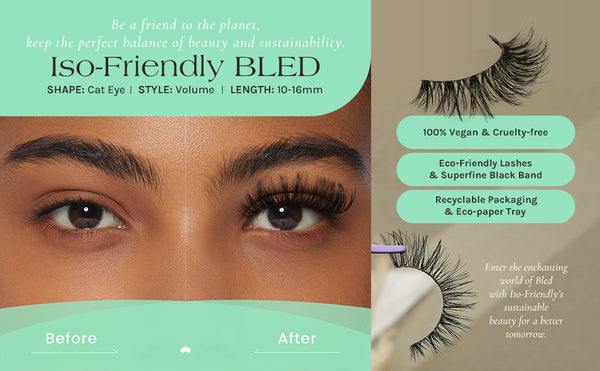
The Rise of Sustainable Beauty: How Eco-Friendly Practices are Transforming the Industry
In the bustling world of beauty, where glamour traditionally reigns supreme, a revolutionary wave is sweeping through the industry—sustainability. As consumers grow increasingly conscious of their environmental footprint, beauty brands are responding with innovative, eco-friendly practices that cater to the desires of mindful consumers. This transformation is evident in everything from packaging to ingredient sourcing, ushering in a new era where sustainability is not just an option but a necessity.

Eco-Friendly Packaging
One of the most apparent changes in the beauty sector is the shift towards eco-friendly packaging. Many brands are moving away from single-use plastics, opting instead for biodegradable or recyclable materials. According to recent findings from Avery Dennison, around 31% of consumers rank brands that invest in sustainable packaging as a top priority when making purchasing decisions. This shift not only reduces waste but also fosters a sense of loyalty among environmentally conscious consumers.
Sustainable packaging innovations are becoming more prevalent, with brands incorporating elements such as refillable containers and recycled materials. For example, the Flora Silk Conditioner Bar from The Green Jungle Beauty Shop showcases how a product can be both effective and environmentally friendly by eliminating plastic packaging entirely.

Responsible Ingredient Sourcing
In addition to packaging, responsible ingredient sourcing is a hallmark of the sustainable beauty movement. Brands are increasingly turning to plant-based ingredients that are effective and ethically harvested. For instance, Natura Brasil combines sustainably sourced ingredients from the Amazon with cutting-edge science to create vegan and cruelty-free bath and body products. This commitment to sustainable ingredient sourcing not only minimizes environmental impact but also ensures that local ecosystems are protected.
Moreover, there's a growing trend towards transparency in the beauty industry, with brands openly sharing their sourcing practices. By doing so, they empower consumers to make informed choices, aligning their purchases with their ethical values.
Cruelty-Free Products
The demand for cruelty-free beauty products is also on the rise. Consumers today are more aware than ever of animal welfare issues, leading to a significant shift in expectations. Brands such as e.l.f. Beauty are at the forefront of this movement, proudly promoting their cruelty-free status and ensuring that their testing methods align with ethical standards.
The shift towards cruelty-free products is not just a trend but a moral imperative for many consumers. A survey by NIQ revealed that ethical considerations are increasingly shaping consumer behavior, with many willing to pay a premium for brands that align with their values (source).
![]()
The Role of Technology
Technology is playing a crucial role in this sustainable revolution. Innovations such as artificial intelligence (AI) are being harnessed to optimize supply chains, reduce waste, and enhance product formulations. By leveraging technology, brands can create more efficient processes that align with sustainability goals.
For example, AI is helping beauty companies streamline their production methods, leading to less waste and improved resource management. This tech-driven approach not only benefits the environment but also enables companies to maintain quality and consistency in their products.
Conclusion
The rise of sustainable beauty represents a paradigm shift in the cosmetics industry. As consumers continue to prioritize eco-friendly practices, brands that embrace sustainability are positioned to thrive. This movement not only empowers consumers to make informed choices that reflect their values but also contributes to a healthier planet.
Sustainable beauty is not merely a passing trend; it is the future of the cosmetics industry. With innovative packaging, responsible ingredient sourcing, and ethical practices becoming the norm, the beauty landscape is evolving for the better. As we move forward, one thing is clear: sustainability in beauty is here to stay, reshaping the industry for generations to come.

In this new era, beauty brands must continue to innovate and adapt, ensuring that their products not only enhance personal beauty but also contribute positively to our environment. The choice is clear—by supporting sustainable beauty practices, we are investing in a brighter, greener future.